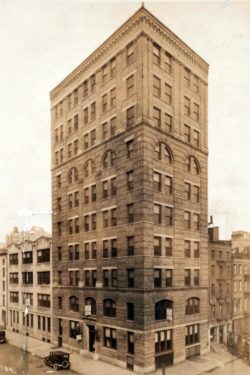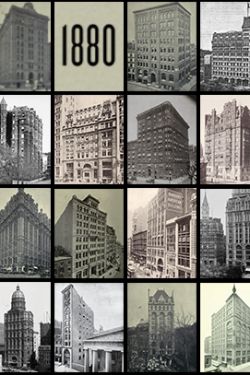
In conjunction with its current exhibition TEN & TALLER, 1874-1900, The Skyscraper Museum presents symposium that explores new narratives of the first decades of high-rise history. Organized into four sessions, on Thursday evening, March 9 and on Friday morning and afternoon, March 10, the symposium brings together a range of scholars and authors who have studied nineteenth-century New York from the perspectives of architecture, engineering, and urban history. New York’s first “skyscrapers” were erected in 1874, initiating the city’s ascent into the vertical. The all-masonry Tribune and Western Union buildings were ten-story office buildings that lifted their decorative towers to 260 and 230 feet. By 1900, the steel skeleton of the 30-story Park Row Building – tallest in the world–topped out at 391 feet. In the last quarter of the 19th century, Manhattan added 250 buildings of ten or more stories – more than triple the number of Chicago. Elevators and new methods of construction enabled this rise, but it was the phenomenal growth of the city itself, whose population swelled from less than a million in the 1870s to more than 3.4 million in 1900, that drove New York into its vertical expansion. In particular, the symposium will explore a new narrative of “All vs. Tall” that considers other uses beyond office buildings, including apartments, hotels, and lofts, and emphasizes the commercial motive of high-rise development. The comprehensive survey of every building in Manhattan of 10 or more stories from 1874 through 1900 that is the subject of the TEN & TALLER exhibition and the three interfaces – the GRID, the MAP, and the TIMELINE – offer new ways of viewing the architectural and urban development of the period that will be a focus of our symposium.


All the Tall Buildings in Manhattan, 1874-1900
Carol Willis, Andrew Alpern, Donald Friedman, Lee Gray, Kathryn Holliday, Thomas Mellins
New York’s First Skyscrapers: When, Where & Why?
Carol Willis, Andrew Alpern, Robert Balder, Lee Gray, Kathryn Holliday